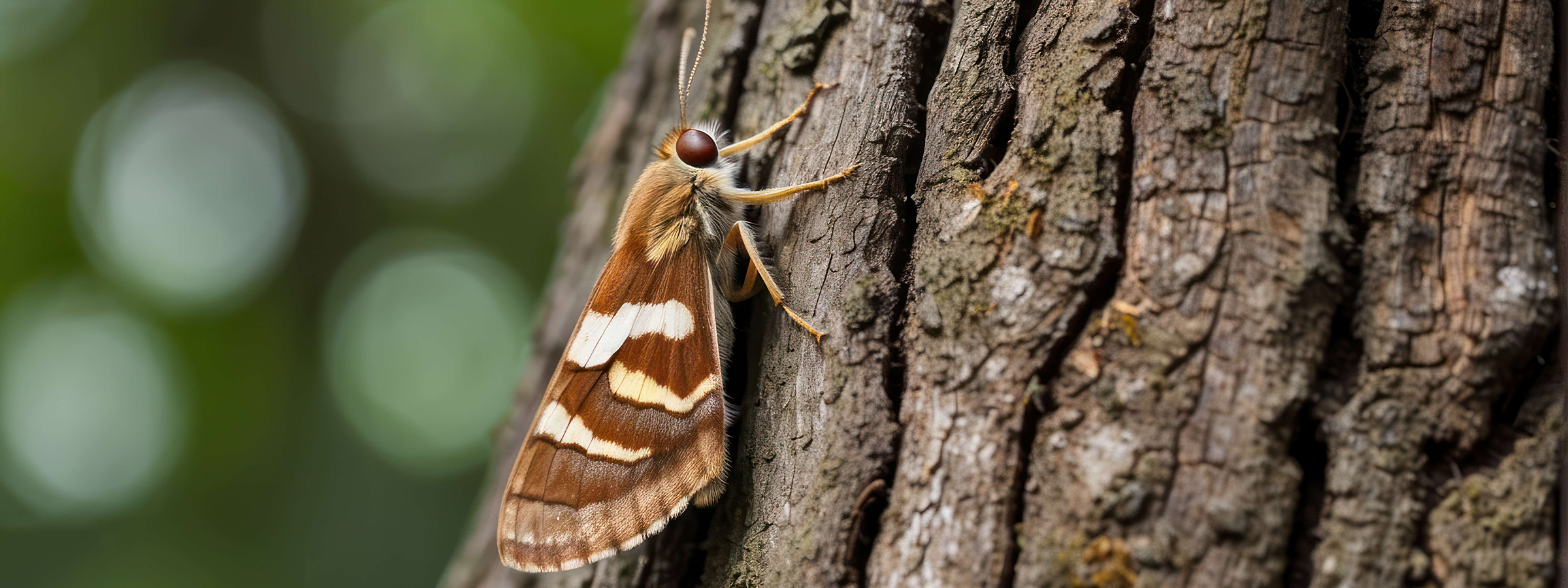
In a world full of insects, butterflies often steal the spotlight with their vibrant colors and graceful flight. However, their close relatives, moths, are equally fascinating and diverse. While moths are often admired for their beauty, some species can pose significant problems as pests. Moth infestations can be a serious concern. In this article, we delve into the captivating world of moths, shedding light on their biology, behavior, and the threats they impose.
Difference Between Moths and Butterflies:
One of the most common questions is, “Is moth a butterfly?” To clarify, it’s essential to understand the fundamental differences between moths and butterflies. Even though moths and butterflies are both members of the order Lepidoptera, they exhibit several differences in their biology, behavior, and life cycle, that will be mentioned briefly:
1. Antennae:
- Moths: Typically have feathery or threadlike antennae. These antennae are often larger and more elaborate than those of butterflies. They may be used to detect pheromones, locate mates, and navigate their environment.
- Butterflies: Generally have a join-together or knobbed antennae, which are usually thinner and smoother than those of moths. Butterflies use their antennae primarily for sensing the environment.
2. Wings:
- Moths: Their wings spread flat when at rest. Their wings are usually dull-colored and lack distinctive patterns when compared to butterflies. However, there are exceptions, and some moth species have brightly colored or patterned wings.
- Butterflies: They frequently rest with their wings held straight and together above their bodies. Their wings are typically vividly colored and covered with complex patterns, which may act as camouflage or a warning to predators.
3. Activity:
- Moths: Many moth species are nocturnal, meaning they are active during the night. However, there are also moth species that are active during the day.
- Butterflies: Most butterflies are active during the day when temperatures are warmer and sunlight is present. They are often observed feeding on flowers and “basking” in the sun.
4. Body Shape:
- Moths: Generally have stout and furry bodies, which help them conserve heat during cooler nights. Their bodies are adapted for energy conservation and efficient flight.
- Butterflies: Typically have thin bodies and are more streamlined in shape than moths. Their bodies are adapted for agility and flexibility during flight.
5. Pupae:
- Moths: Moth pupae are typically enclosed in a silk cocoon, which protects the pupal stage. The caterpillar may spin the cocoon with silk produced by special glands.
- Butterflies: Butterfly pupae, or ‘chrysalises’, are usually naked and attached to a surface such as a twig or a leaf. The pupa is formed from the hardened exoskeleton of the larva to protect the transformation into an adult.
6. Habitat:
- Moths: Moths are found in various habitats, including forests, grasslands, deserts, and urban areas. They are often associated with diverse habitats and can be found in both natural and human environments.
- Butterflies: Butterflies are often associated with open habitats such as meadows, gardens, and fields. They are commonly found in areas with plentiful flowers and sunlight, which provide nectar and warmth for feeding and indulging.
While these are general differences between moths and butterflies, there are exceptions, and some species may exhibit characteristics of both groups.
Get A Free Quote
The Biology of Moths:
Let us delve more into the biology of moths regarding life cycle, species, and diversity in form and function.
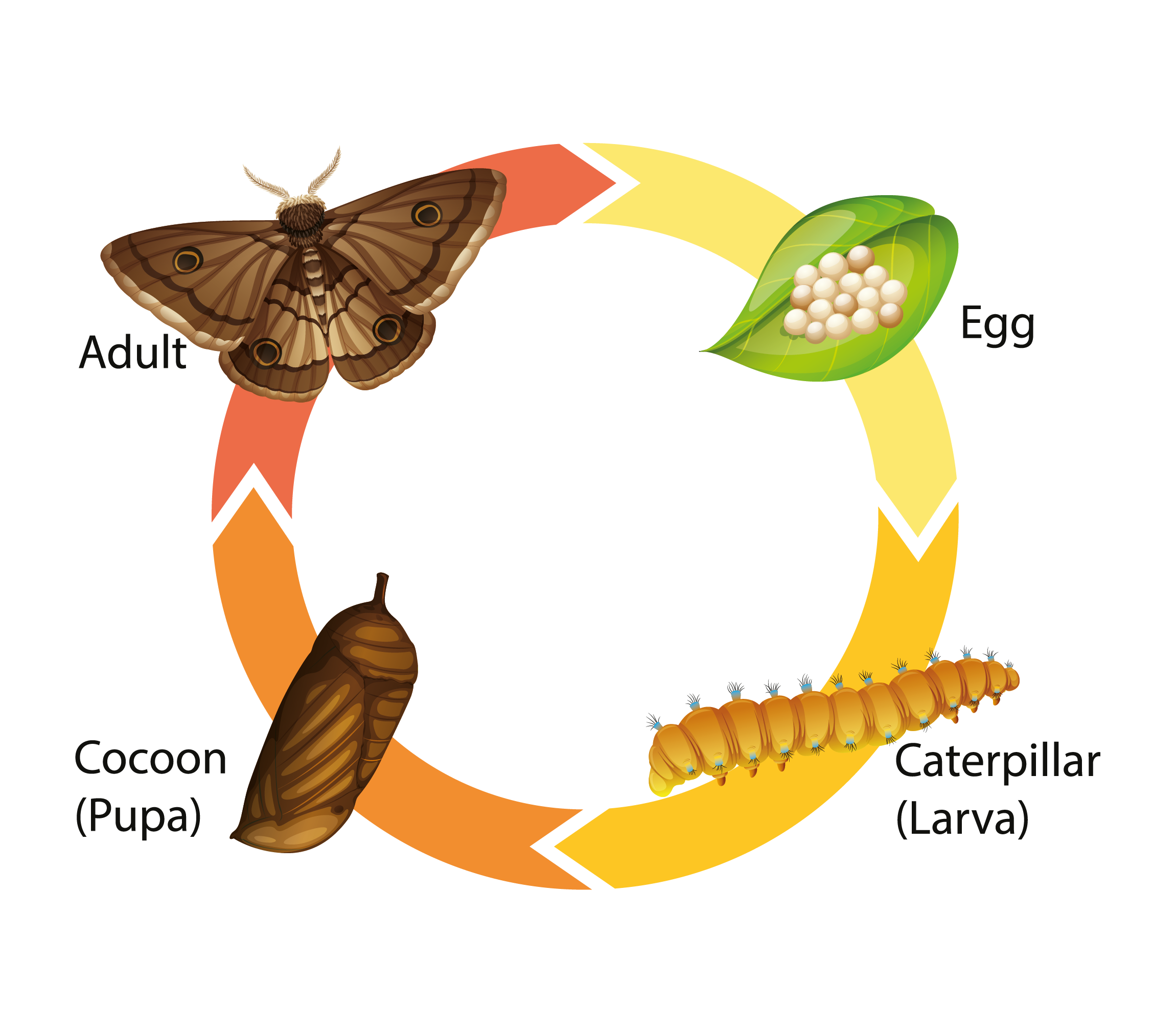
Moths undergo a fascinating process called complete metamorphosis, which consists of four distinct stages: egg, larva (caterpillar), pupa (chrysalis), and adult. Understanding the life cycle of moths provides insight into their remarkable transformation and adaptation strategies. Here’s a detailed look at each stage:
1. Egg Stage:
- The life cycle of a moth begins when a female moth lays eggs, often on or near the food source that the caterpillars would consume after hatching.
- Moth eggs vary in size, shape, and color depending on the species. They may lay eggs singly or in clusters, depending on the moth species and its reproductive behavior.
2. Larva (Caterpillar) Stage:
- Once the eggs hatch, they release tiny caterpillars that immediately begin to feed.
- Moth caterpillars are eager eaters and will consume plants, often specific to their species. Some caterpillars are generalists (feed on a wide range of things), while others are highly specialized in their diet.
- Caterpillars undergo several molts as they grow, shedding their exoskeleton to accommodate their increasing size.
- During this stage, the primary goal of the caterpillar is to eat and grow rapidly in preparation for the next stage of its life cycle.
3. Pupa (Chrysalis) Stage:
- When the caterpillar reaches its full size, it stops eating and seeks out a suitable location to pupate.
- The caterpillar forms a protective cover, called a pupa or chrysalis, around itself, often using silk produced by specialized glands.
- Inside the pupa, the caterpillar undergoes a remarkable transformation, breaking down its body tissues and reorganizing them into the body of an adult moth.
- This stage is a period of dormancy and major change, during which the caterpillar’s body undergoes metamorphosis to prepare for its life as an adult moth.
4. Adult Stage:
- Once the transformation is complete, the adult moth emerges from the pupa.
- The newly emerged moth is often soft and its wings are bent. It pumps fluid into its wings to expand them and then allows them to dry and harden before flight.
- Adult moth typically has two pairs of wings covered in scales, a curled proboscis (feeding tube) for feeding, and large eyes.
- The primary goal of the adult moth is to find a mate and reproduce, restarting the life cycle.
Common Types of Moth Pest in Australia:
Australia is home to a diverse range of moth species, with over 22,000 species recorded to date. However, several moth species are known for their pest status. Some of those moth species in Australia include:

Indian Meal Moth
- The adult Indian meal moth is 5/8 inches long. The outer half to two-thirds of its wings are reddish-copper colored.
- The larva is white, 1/2 inch long, and has a brown head.
- One of the most common pantry pests is the Indian meal moth infests stored grains, flour, dried fruits, nuts, and other pantry items ruining or spoiling large quantities of food.
- They can quickly reproduce and spread, contaminating food and causing significant economic losses.
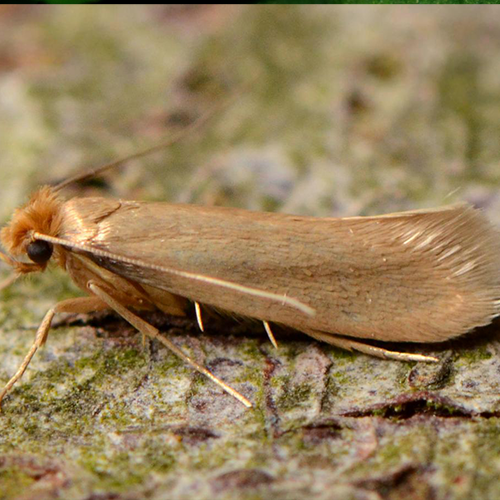
Clothes Moths
- Webbing Clothes Moth and Case-Making Clothes Moth are two of the prevalent clothes moth (aka carpet moth) species in Australia.
- Webbing clothing moth has a yellowish-beige color with a metallic sheen.
- Case-making clothes moth has a dull, mottled pattern of light and medium browns.
- Clothes moth is most known for feeding on natural fibers such as wool, fur, silk, and feathers.
- Their larvae can cause significant damage to clothing, carpets, upholstery, and other household items.

Gum Leaf Skeletoniser
- The larvae are 5-20mm long.
- Young larvae tend to cluster on the leaf surface, whereas adult larvae scatter and feed separately.
- The adult moth’s wingspan is 3 cm, with pale and dark gray wings.
- The caterpillars of this moth species feed on eucalyptus leaves, often defoliating trees.
- They can cause significant damage to eucalyptus trees and urban trees.
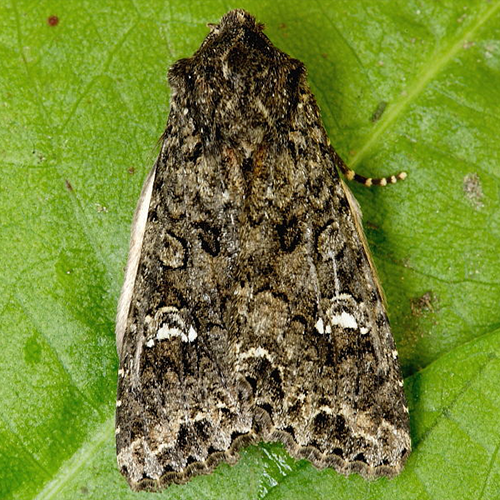
Cabbage Moth
- Adult moths have a wingspan of about 32 to 45 mm.
- Forewings are grayish-brown with a mottled appearance, while hindwings are lighter.
- Larvae are green with a faint yellow stripe along each side and reach a length of about 40 mm.
- A common pest of cabbage, broccoli, and other cruciferous vegetables, this moth can cause extensive damage to crops.
- The caterpillars feed on leaves, causing holes and reducing the quality of the produce.
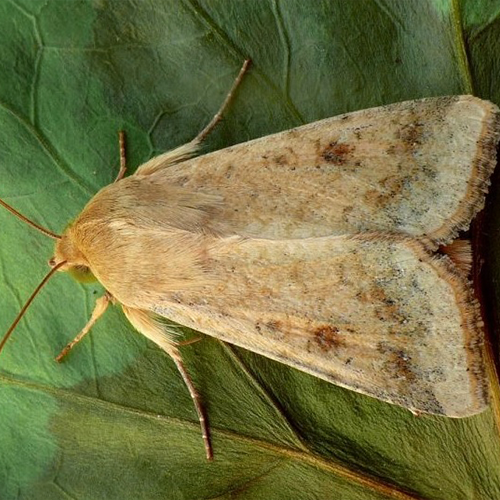
Cotton Bollworm
- Adult moths have a wingspan of 32 to 40 mm.
- Forewings are grayish-brown with irregular darker markings, while hindwings are paler with a darker border.
- Larvae are pale green, brown, or pink with longitudinal stripes along the body and reach a length of about 35 mm.
- The cotton bollworm attacks a wide range of crops, including cotton, corn, tomatoes, and soybeans.
- It can cause significant economic losses for farmers by reducing yields and damaging crops.
These moth pests can be challenging to control and can cause significant damage to crops, stored products, and textiles.
The Economic Importance of Moths:
Even though moths play a significant role in the economy as pests, they also play a significant role as beneficial insects. Here’s an overview of their economic importance:

Pollination
Crops, wildflowers, and fruit trees rely on many moth species for pollination such as hummingbird moth. They help pollinate crops like cotton, corn, tomatoes, and fruit trees, resulting in effective fruit sets and large yields.

Biological Control
Certain moth species help reduce agricultural pests naturally, for example, parasitic and predatory moths help control pest insect populations, minimizing the demand for chemical pesticides and lowering farmers’ production expenses.

Silk Production
Silk manufacturing is one of the most economically significant functions of moths. The silkworm moth is bred for silk production, and the silk industry employs and generates cash for millions of people worldwide.

Food Source
Moth caterpillars are a vital food source for many animals, including birds, bats, and insects. In some areas, they are gathered and eaten by people as a protein source.

Textile Industry
The wool moth can be a damaging pest of textiles. While these pests are harmful to textiles, they add to the need for pest control services and products, which benefits the pest management business.

Biodiversity and Ecosystem
Moths play a vital role in ecosystems and contribute to biodiversity. They serve critical roles in nutrient cycling, food chains, and the functioning of ecosystems, which enhance the overall health and productivity of natural and agricultural systems.
Moths Threats to Humankind:
As it was mentioned earlier, moths, while generally not dangerous to humans, can pose certain threats, primarily through indirect means. Here are some key threats they pose:
1. Agricultural Damage
Moth larvae, commonly known as caterpillars, can cause significant damage to crops. Some species, such as the corn earworm and the cotton bollworm, are notorious agricultural pests. They feed on a wide range of crops, including corn, cotton, tomatoes, and beans, leading to substantial economic losses and food security concerns.
2. Property Damage
Certain moth species can cause damage to textiles and stored products. For example:
– The larvae of clothes moths, such as the common clothes moth, feed on natural fibers like wool, silk, and fur, causing damage to clothing, carpets, and other textiles.
– The larvae of pantry moths, such as the Indian meal moth, infest stored food products, including grains, flour, and dried fruits, leading to food spoilage and contamination.
3. Allergic Reactions
Moth scales, which can become airborne, might cause allergic reactions in sensitive individuals. Handling infested materials can lead to skin irritation or respiratory issues. For instance, the urticating hairs of certain moth larvae, like the brown-tail moth, can cause dermatitis and respiratory problems upon contact.
4. Ecological Impact
Invasive moth species can disrupt local ecosystems. For example, the gypsy moth is a highly invasive species that eliminates enormous areas of forest, threatening biodiversity and forest health. The loss of tree cover can lead to broader ecological impacts, including changes in habitat for other species and increased vulnerability to other pests and diseases.
5. Vector for Plant Diseases
Some moth species can act as vectors for plant diseases. By feeding on various parts of plants, they can transmit pathogens, exacerbating the damage to crops and natural vegetation.
Threats to Moths:
As threatening moths can be towards human environments, Moths also face various threats to their populations, habitats, and ecosystems as well. Understanding these threats is crucial for protecting moth diversity and ecosystem health. Here are some of the main threats they face:
1. Habitat Loss and Degradation:
Moth populations face significant threats from habitat loss caused by urbanization, agriculture, and environmental changes.
2. Climate Change:
Climate change may affect moth varieties, phenology, and interactions with other species.
3. Light Pollution:
Light pollution disrupts the natural behaviors of nocturnal moths, affecting navigation, reproduction, and feeding patterns.
4. Pesticide Use:
Pesticides, including insecticides and herbicides, can harm moth populations directly through toxicity and indirectly by reducing their food sources and habitat.
5. Invasive Species:
Invasive species can compete with native moths for resources, prey on them, or introduce new diseases and parasites.
6. Pollution:
Pollution from pesticides, industrial chemicals, and agricultural runoff can contaminate moth habitats and food sources, affecting their health and reproductive success.
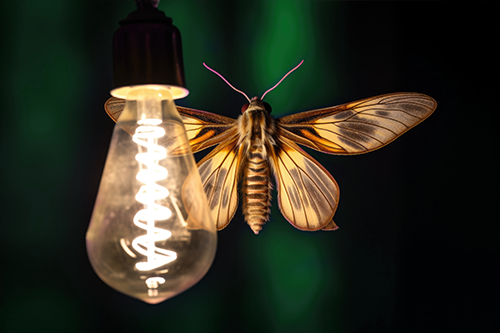
Interesting Facts about Moths:
1- Nighttime Navigators
Moths are often nocturnal and have developed the ability to navigate by the moon and stars. They use celestial navigation to maintain a straight flight path. However, this leads them to walk towards artificial lights, a phenomenon known as positive phototaxis.
2- Exceptional Hearing
Certain moth species have highly developed ears that can detect ultrasonic sounds made by predatory bats. This adaptation allows them to perform silent movements to avoid being caught. The greater wax moth has the most sensitive hearing of any known animal, capable of detecting frequencies up to 300 kHz, much higher than the hearing range of humans.
3- Chemical Warfare
Some moths have evolved to produce toxic chemicals as a defense mechanism. The caterpillars of the cinnabar moth feed on toxic ragwort plants and store the toxins in their bodies, making them distasteful to predators.
4- A Taste for Wool
The larvae of the common clothes moth have a unique ability to digest keratin, the protein found in wool, hair, and feathers.
5- Extreme Metamorphosis
The metamorphosis from caterpillar to moth is a complex process. During the pupal stage, the caterpillar’s body breaks down into a soup-like shape before reassembling into the adult moth. This transformation involves significant reorganization of cells and tissues.
6- Bright Colors and Patterns
Many moths have bright and colorful patterns on their wings, which serve various purposes. Some use vibrant colors to warn predators of their toxicity, while others have eye spots that can startle or confuse predators. The Madagascan sunset moth is known for its sparkling wings and vibrant colors, making it one of the most beautiful moths.
7- Non-Feeding Adults
Some moth species do not feed at all during their adult stage. For example, adult Luna moths do not have a functioning mouthpart and live only for about a week, surviving on the energy they built up as caterpillars.
8- Environmental Indicators
Moths are excellent indicators of environmental health. Because they are sensitive to changes in habitat and climate, studying moth populations can provide valuable information about the state of the ecosystem and help detect environmental changes early.
9- Cultural Symbolism
You’ve likely noticed moth symbolism in many cultures and might wonder, “What do moths symbolize?” In various cultures, moths hold different meanings. In some Native American traditions, for instance, they are seen as messengers. In Mexican folklore, the Black Witch Moth (aka death moth) is often considered an omen when it enters a home as its associated with death.
10- Longevity in Some Species
While many moths have short lifespans, some species can live for several months. For example, the yucca moth lives for an extended period to synchronize its life cycle with that of the yucca plant, with which it has a mutualistic relationship.
All in all, moths are an important and diverse species of insects, having fascinating biology and behaviors. While certain species may be pests, others play critical roles in ecosystems and the economy. Understanding moth biology, behavior, and threats helps to recognize their importance and the need for their conservation.
Get A Free Quote